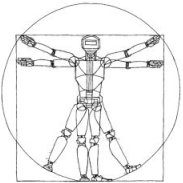Robotics: Science and Systems VI
Stochastic Modeling of the Expected Time to Search for an Intermittent Signal Source Under a Limited Sensing Range
D. Song, C. Y. Kim and J. YiAbstract:
A mobile robot is deployed to search for a stationary target that intermittently emits short duration signals. The searching mission is accomplished as soon as the robot receives a signal from the target. However, the robot cannot perceive the signal unless the target is within its limited sensing range. Therefore, the time to search the target is inherently random and hence unknown despite its importance in many searching and rescue applications. Here we propose the expected searching time (EST) as a metric to evaluate different robot motion plans under different robot configurations. We derive a closed form solution for computing the EST. To illustrate the EST model, we present two case studies. In the first case, we analyze two common motion plans: a slap method and a random walk. The EST analysis shows that the slap method is asymptotically faster than the random walk when the searching space size increases. In the second case, we compare a team of n low-cost equally configured robots with a super robot that has the sensing range equal to that of the summation of the n robots. The EST analysis shows that the low-cost robot team takes Θ(1/n) time and the super robot takes Θ(1/√n) time as n→∞. In both cases, our EST model successfully demonstrates its ability in assessing the searching performance. The analytical results are also confirmed in simulation.
Bibtex:
@INPROCEEDINGS{ Song-RSS-10,
AUTHOR = {D. Song AND C. Y. Kim AND J. Yi},
TITLE = {Stochastic Modeling of the Expected Time to Search for an Intermittent Signal Source Under a Limited Sensing Range},
BOOKTITLE = {Proceedings of Robotics: Science and Systems},
YEAR = {2010},
ADDRESS = {Zaragoza, Spain},
MONTH = {June},
DOI = {10.15607/RSS.2010.VI.035}
}
